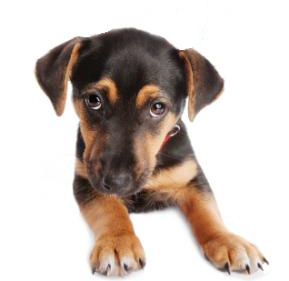Dog communication refers to movements and sounds dogs use to send signals to other dogs and other creatures (usually humans). Dog communication comes in a variety of forms and is part of the foundation of dog social behavior. (Wikipedia)
 Dogs are pack animals. It is important to understand they are always aware of their position in the pack. Whether it’s dog to dog communication or owner to dog communication, dogs understand certain signals.
Dogs are pack animals. It is important to understand they are always aware of their position in the pack. Whether it’s dog to dog communication or owner to dog communication, dogs understand certain signals.
Your pet’s pack includes you, family members, other pets and (of course) all the dogs in your household.
The Alpha dog or pack leader is seen by your dog as the leader and protector of the whole pack, and because of this, it is crucial that you take on this role.
Your dog will be healthier and happier if it feels secure in it’s pack, knowing that his leader is doing their job and keeping everyone safe.
Dog Communication Tip #1
The first step is to know the signals your dog will understand.
You will need to consistently communicate “alpha signals” to your dog, but always with compassion and respect. You never want to come across as aggressive, overbearing or bullying!
It’s about learning the language that a dog understands and using the correct signals. Mixed signals and inconsistency will confuse your dog, making him think that the pack leader is not effective. This makes your dog feel stressed and he will try to take over as alpha. If he does, it’s not because he is being “bad”, but that you have given him the wrong signals.
Dog Communication Tip #2
So what are these signals and how do you communicate them effectively?
The pack leader always eats before the other pack members. This means you must eat your dinner completely and clear the table before giving your dog his bowl of food. He should see you eating and understand clearly that he can only eat once you have finished.
If you have been in the habit of feeding your dog before your dinner, or even during, this may take a while for your dog to become accustomed to. Be aware that any fuss he makes while you’re eating is part of his learning process. This is a part of dog communication. You are giving him new signals – i.e. new information about the pack.
Dog Communication Tip #3
Next, you should always lead your dog, especially through doorways and narrow passages. Never let your dog push past you or in front of you. The pack leader would never allow a subordinate dog to push past or “lead” the pack. That means you, too! Use a leash if you need to. Ensure you always enter doors, rooms, gates, climb stairs (etc.) in front of your dog. Stairs in particular allow him to run to the top and look down on you, which is displaying the classic dominant behavior.
Dog Communication Tip #4
The key to this is NOT to punish the wrong behavior – it’s too late for that. You need to stop him from exhibiting alpha behavior in the first place. Use a leash, close doors, give a short, sharp sound or whatever your dog responds to. Just remember to be firm, kind and respectful. You are communicating with your dog — not trying to bully him into submission.
Dog Communication Tip #5
The key for all these dog communication techniques is repetition, consistency and patience.
[xyz-ihs snippet=”Signoff1″]
